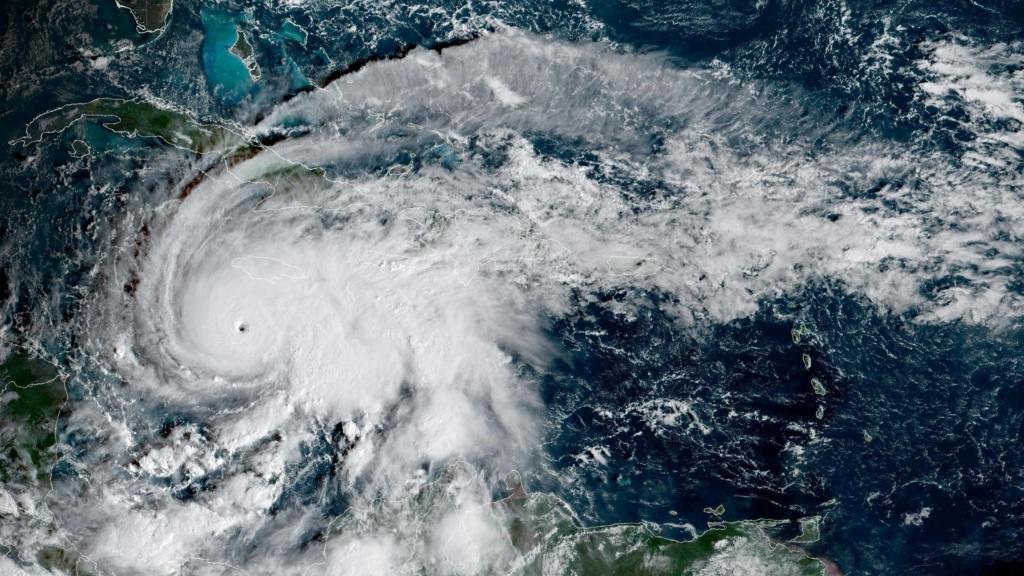Introduction
Cyclone Montha has battered Andhra Pradesh’s coastal districts, bringing unprecedented rainfall and fierce winds to Vizag (Visakhapatnam), Kakinada, Nellore, and surrounding regions. The storm’s arrival on October 27–28, 2025, marked the season’s most severe weather event, with official estimates showing rainfall exceeding 150mm in many areas. As Montha intensified into a severe cyclonic storm, it forced authorities, residents, and businesses to take urgent measures for safety and damage control, dramatically impacting daily life, transportation, electricity, communication, and more.
The Cyclone’s Path and Intensity
Cyclone Montha formed in the west-central Bay of Bengal, moving north-northwest at speeds up to 17 kmph, according to the India Meteorological Department (IMD). On October 28, it was centered about 190 km south-southeast of Machilipatnam, 340 km south-southwest of Visakhapatnam, and was primed to make landfall near Kakinada by evening or night, with sustained winds between 90–110 kmph. High wave warnings of up to 4.5 meters were issued for Visakhapatnam’s coastline, and both sea and river levels were closely monitored by district authorities.
Why 150mm of Rain Is So Dangerous
Rainfall rates of 150mm in under a day are considered ‘extreme’ by meteorological standards and can exceed drainage capacity in most cities, especially in coastal India. During Montha, rain swept across Visakhapatnam, Anakapalle, Kakinada, and Tuni, flooding roads, swamping housing colonies, and shutting down markets. Runoff overwhelmed low-lying areas, causing damage to property and temporarily isolating communities.
Heavy rainfall also led to the overflow of tanks and rivers, with water entering drains and streets, increasing risks of water- and vector-borne diseases. In rural districts, standing crops took a beating, and agricultural experts cautioned about possible harvest losses from waterlogging and strong winds.
Disrupted Services: Transport, Power, and Communication
The impact of Cyclone Montha stretched beyond flooded homes and streets. Over 50 trains were canceled by South Central Railway, flights to and from coastal Andhra Pradesh were suspended, and key highways saw partial closures due to waterlogging and debris. Power supply interruptions hit parts of Vizag, Kakinada, and East Godavari, leaving thousands temporarily without electricity. Telecommunication lines, especially in semi-urban and rural pockets, were hampered by fallen trees and snapped wires.
Emergency repair crews struggled to coordinate under tough conditions. Utility operators, telecom providers, and local government teams battled to restore services, prioritizing hospitals, water treatment plants, and critical infrastructure.
Real-Time Government Response and Evacuations
Andhra Pradesh’s disaster management teams sprang into action, setting up over 150 rehabilitation and relief centers in coastal districts. As of midday October 28, more than 50,000 people had been evacuated from sensitive low-lying zones to relief camps, following orders from Chief Minister N. Chandrababu Naidu. Food, clean drinking water, and medical aid were prioritized at relief sites.
District authorities worked round-the-clock with drones for real-time weather monitoring, deployed special officers for evacuation oversight, and used public address systems for ongoing advisories. PM Narendra Modi and key Union ministers coordinated with Andhra and Odisha counterparts, ensuring central resources were available.
Safety Tips for Residents
With the cyclone still active and additional rain forecast over the next 24 hours, safety remains paramount. Here are critical precautions:
- Stay Indoors: Avoid venturing outside, especially near beaches, riverbanks, or waterlogged roads.
- Secure Property: Fasten loose items, seal windows and doors, and unplug electrical appliances.
- Evacuate When Advised: Follow official orders for evacuation immediately; do not ignore calls to move to safer locations.
- Emergency Supplies: Stock up on potable water, non-perishable food, medicines, and flashlights.
- Avoid Flooded Areas: Floodwater can hide debris, downed wires, and contaminants—do not wade or drive through.
- Stay Updated: Track advisories on radio, television, or trusted social media channels; ignore rumors.
- Health Precautions: Boil or purify water, use mosquito repellents, and maintain hygiene to prevent disease.
Forecast: What’s Next for Andhra Pradesh
IMD forecasts remain fluid as Cyclone Montha’s impact evolves. The aftermath is likely to bring continuing rain, “very heavy” to “extremely heavy” showers in isolated pockets, coupled with strong wind gusts. A red alert has been issued in 19 districts, while orange and yellow alerts cover additional areas at risk.
Moderation in rain is expected after landfall, but infrastructure recovery—transportation, power, communication, and farming—may take days to normalize. Disaster management teams, doctors, and engineers remain deployed for assessment and immediate repairs.
Community Stories: Resilience and Recovery
From Vizag’s urban centers to remote villages near Kakinada, stories of resilience have emerged. Fishermen tied up their boats, families sought shelter in schools and temples, and volunteers rallied to distribute food and comfort. In Nellore, relief center hosts provided safety and hope to hundreds facing nature’s fury.
Local police and firefighters patrolled for swift rescue operations, supporting vulnerable groups such as the elderly and children. Social media channels and local apps ensured that warnings traveled swiftly, saving lives through rapid information sharing.
Conclusion
Cyclone Montha’s destructive power and 150mm of rain have brought Andhra Pradesh to a standstill, but coordinated government response, community resilience, and public action are helping limit the toll on human life. As the region braces for late-night landfall and more rain, the focus remains on safety, recovery, and learning from every feature of this severe storm.
By applying best safety practices and paying attention to official updates, residents can ensure minimal risk during these challenging events. The full scope of damage and recovery will unfold in the days ahead, as Andhra Pradesh shows what preparedness and collective effort can achieve in the face of natural disasters.

